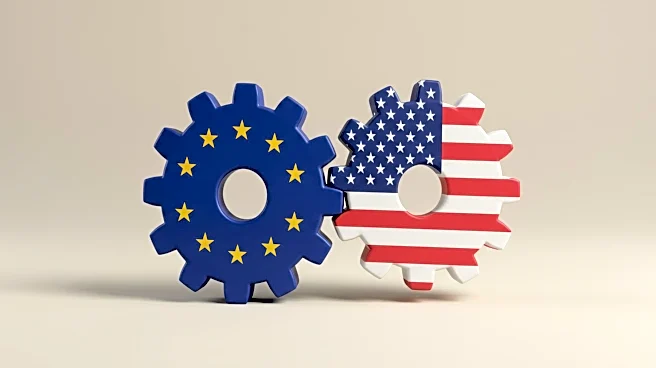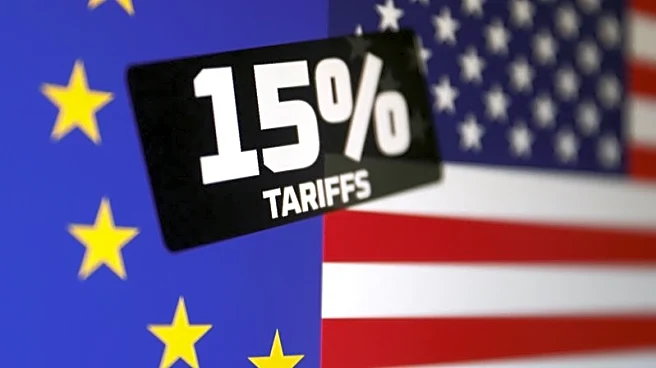What's Happening?
The United States and the European Union have formalized a framework trade agreement, which includes significant tariff adjustments. Under the agreement, the U.S. will apply a 15% tariff or the most favored nation duty rate on EU imports, with a cap on tariffs for pharmaceuticals, semiconductors, and lumber. The EU plans to eliminate tariffs on U.S. industrial products and provide preferential market access to various U.S. food exports. The agreement also includes cooperation on automobile standards and potential collaboration on steel and aluminum imports to protect against overcapacity. The EU is expected to procure substantial energy products and artificial intelligence chips from the U.S., while EU companies will invest heavily in the U.S.
Why It's Important?
This trade agreement between the U.S. and EU is significant as it aims to stabilize and enhance the largest trading partnership in the world. By reducing tariffs and regulatory burdens, the agreement is expected to boost transatlantic trade, benefiting industries such as pharmaceuticals, semiconductors, and agriculture. The deal also promises substantial investments and procurement commitments, which could drive economic growth and job creation in both regions. The cooperation on automobile standards and potential measures to protect domestic markets from overcapacity further underscore the strategic importance of this agreement in fostering long-term economic stability.
What's Next?
The U.S. and EU will continue to document and implement the terms of the agreement, with tariff reductions expected to take effect once the EU introduces relevant legislation. Both parties will explore additional sectors for tariff adjustments and cooperation. The agreement's impact on industries and trade relations will be closely monitored, as stakeholders assess the benefits and challenges of the new framework. The ongoing collaboration between the U.S. and EU may lead to further negotiations and adjustments to enhance trade and economic ties.












